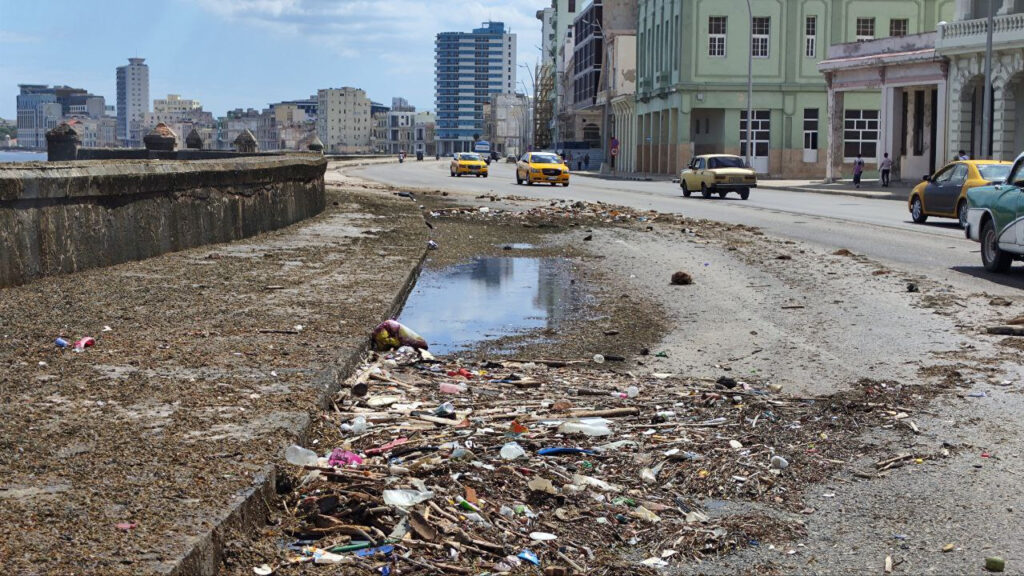
14ymedio, Juan Diego Rodríguez, Havana, 30 March 2024 — “What comes from the sea, returns to the sea,” is a maxim that the residents of San Leopoldo, a Havana neighborhood bordering the Malecón, know very well. It’s a low zone in this area of the Cuban capital where there are frequent coastal floods. The sewers, in addition to draining the water, bring into homes the odor of saltwater mixed with trash, and the wastewater carries crabs that are skinny and pale, a result of a contaminated coastline that has few natural nutrients.
Almost a hundred years ago, after the construction of the wall where so many habaneros go to refresh themselves at night, the rocks were covered and the waves diverted. Areas that were filled in until the end of the 19th century were pure coastline. A good part of those areas snatched from the sea are once again under its control when storms and hurricanes hit the Cuban capital. The water rises in a few hours, floods Maceo Park and rushes through the streets of Lealtad, Escobar, Perseverancia and Reina into Belascoaín. Nothing can stop i


